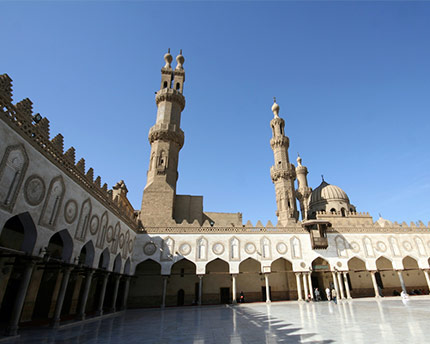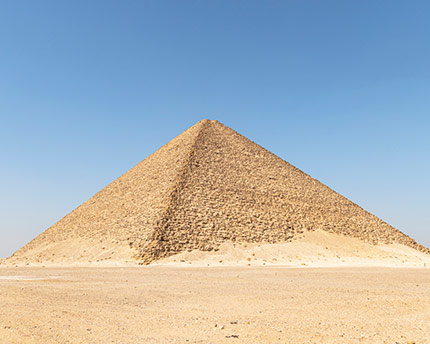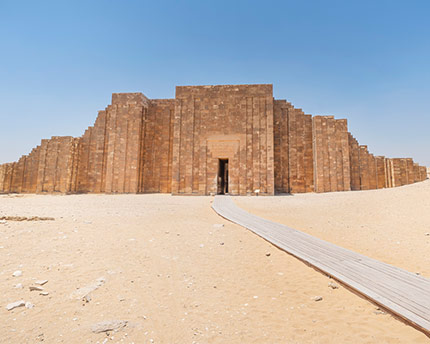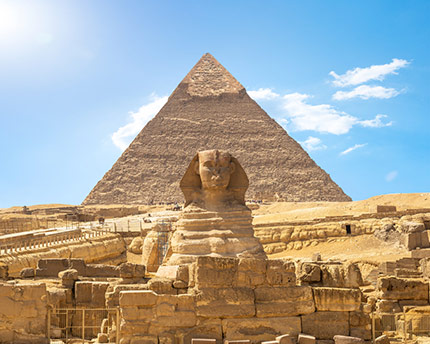Al-Azhar is one of Cairo’s oldest and main mosques and a must-see when visiting the Egyptian capital. This jewel of Islam is located in the Historic Cairo area and is therefore a UNESCO World Heritage Site.
Entering and visiting the mosque is essential for a better understanding of the relationship between the politics, religion and historical evolution of Egypt.
History of the Mosque
The Al-Azhar Mosque was built between 970 and 972, during the period of the Fatimid Caliphate that dominated all of North Africa from present-day Morocco to the Red Sea. The new capital of the caliphate, Al-Qahirah, was under construction and required a large mosque for prayer and training. The temple soon became an important centre of learning in the new city and, to this day, it remains the oldest functioning Islamic university in the world.
The passing of the centuries and the different historical periods in Egypt left their mark on the mosque, which grew and changed according to the rulers and influences.
It began as a large prayer hall with five corridors and a central courtyard, occupying some 85 metres long and 69 metres wide. It was during the Mamluk period (1250-1517) when the mosque grew and added minarets and madrasas. However, it was in the subsequent Ottoman period (1517-1867) when the complex underwent its greatest expansion, doubling in size and adding new entrance gates such as the Bab al-Muzayinin (Barbers’ Gate), which is now the main entrance to the mosque.
Architecture and details of the Al-Azhar Mosque
The mosque’s long history has left behind multiple architectural styles that reflect the different ruling periods in present-day Egypt, giving the ensemble a certain architectural complex nature. It includes everything from Roman and Greek columns to Byzantine mosaics. The Al-Azhar Mosque’s architecture is closely linked to the history and evolution of both Cairo and Egypt.
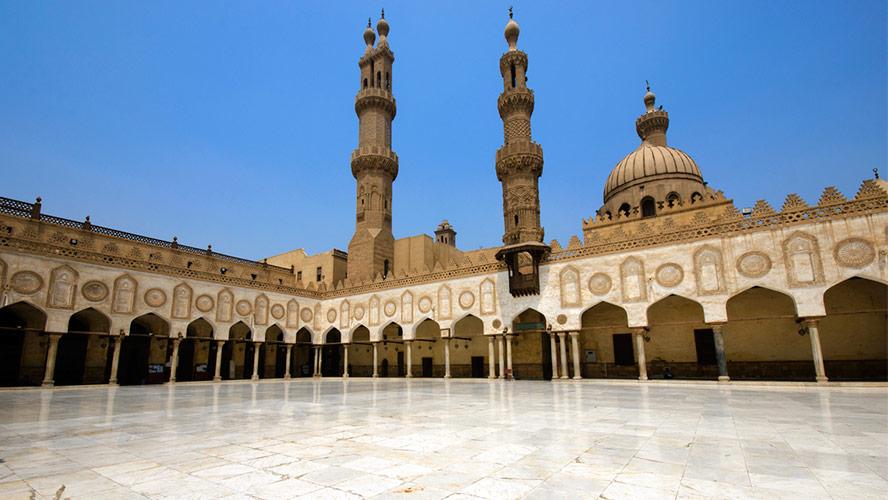
The area occupied by the present mosque is marked by its impressive white-hued main courtyard, which is surrounded by a large arcade that completes its four sides.
The Mamluk era was one of the periods in which more constructions were added to the original mosque, with madrasas such as those of Aqbugha, Al-Taybarsiyya and Gawhariyya, with marble dreams and a stone dome with arabesque motifs. Some of today’s minarets were also built, such as the beautiful Qaytbay and Al-Ghuri, finished with a double crown.
Political importance of Al-Azhar
Al-Azhar has greater influence in the Islamic world than other institutions. Its role within the country has been under permanent debate over its independence from the state and the desired liberal orientation against ultra-conservative and Salafist Islamist movements.
In addition to its political significance, the university founded there is today one of the most prestigious centres of learning in the Sunni Islamic world, attracting elite students from across the Muslim world. In addition to the teaching of the Sharia or Islamic law, Al-Azhar also teaches a wide range of arts and sciences such as literature, grammar, rhetoric, theology, law, medicine and philosophy.
To realise how big Al-Azhar is, its library has some 100,000 copies, some of them old manuscripts dating from before the creation of the mosque.
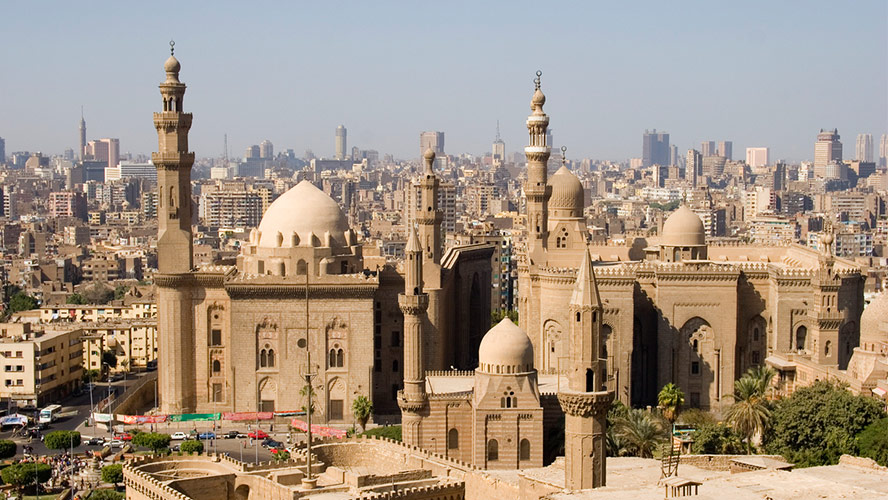
Where to eat near the Al-Azhar Mosque
Since the mosque is in the centre of Historic Cairo, a top-rated tourist area, you will find several local restaurants nearby. Here are some of them:
- Naguib Mahfouz: a pleasant café in the nearby Khan El-Khalili Bazaar where you can eat traditional dishes or try a shisha.
- Studio Misr: a small restaurant in Al-Azhar Park overlooking the Saladin Citadel and the city. A good recommendation if you want to have a pleasant evening meal.
- Fishawy: a mirror-filled café, also in the Bazaar, where you can enjoy a good tea or coffee during a break from the bustling market. The Egyptian Nobel laureate Naguib Mahfouz used to go there.
- Neffa El-Najahi: a little further on, near Abdeen Palace, this popular local restaurant is a perfect choice for good meat dishes at reasonable prices.
Where to stay near the Al-Azhar Mosque
The east bank of the river Nile is one of the best areas to stay in Cairo and is relatively close to the Al-Azhar Mosque. It is home to some of the city’s main points of interest such as Tahrir Square, the Egyptian Museum, the Citadel, the Abdeen Palace, the Khan El-Khalili Bazaar and various shopping centres. The area is safe, tourist-friendly and full of restaurants.
Alternatively, if the area of the city is less important to you, an excellent place to sleep in Cairo is at the Barceló Cairo Pyramids, a magnificent four-star, 236-room hotel located on Sharia Al Haram Avenue, the main road leading from downtown Cairo to the Pyramids of Giza.





























































